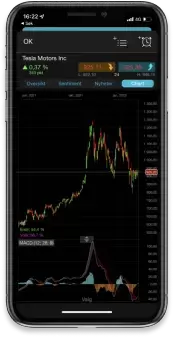European markets finished a choppy week with a modest rebound, with the FTSE 100 breaking a three-day losing streak, although it still fell for the second week in succession having sunk to a three-week low midweek. US markets also had a more positive week with the S&P 500 briefly pushing above the 4,800 level for the first time in two years.
The catalyst for Friday’s push higher was a downside miss in US PPI for December which pulled forward speculation yet again about central bank rate cuts, which helped pull the US 2-year yield to its lowest level since May last year. We also saw similar sharp declines in UK and German 2-year yields as well, although the market enthusiasm and pricing for rate cuts isn’t anywhere near as aggressive as it is for the prospect of a cut in US rates. This comes across as a little bizarre given that of all the major economies now the US appears to be in much better shape, and therefore in less need of the stimulus of a rate cut.
Last week’s PPI numbers served to overshadow a hotter than expected CPI figure which saw headline inflation in the US push up from 3.1% to 3.4%, the second time we’ve seen US inflation rebound from the 3% level since June last year. This uncertainty suggests that markets could be jumping the gun when it comes to the likelihood of March rate cuts, and it is the 2-year yield where this is being priced most aggressively.
With earnings season now under way in the US with the first set of Q4 bank results garnering a rather mixed market reaction, although there was nothing significant in the numbers to suggest that the US consumer was feeling the pressure from current interest rate levels. Today the US is off for Martin Luther King Day which means markets in Europe could well be more subdued than normal, and so far this year there hasn’t been that much to get particularly excited about anyway.
The markets already know that the Federal Reserve is done when it comes to further rate increases, and currently have six 25bps rate cuts priced in for this year. That seems rather a lot and is more than the three the Fed have in their dot plot projections.
Nonetheless while markets in Europe and the US have got off to an uncertain start, one index that hasn’t is the Nikkei 225 which has raced out of the blocks, pushing up to its highest levels in 34 years and up over 6% year to date already, and in so doing has got people speculating whether we can see a return to those 1989 peaks of 38,957.
This week the focus is set to be very much on the UK economy in the wake of Friday’s better than expected November GDP numbers, which raised the prospect that the economy may have avoided a technical recession at the end of last year, as a rebound in services activity saw the economy expand by 0.3%.
This week we get data for wages and unemployment for November, as well as December CPI and retail sales, all of which have the potential to shift the dial on the timing of a first rate cut from the Bank of England. With inflation still almost double the Bank of England’s 2% target and wage growth still upwards of 7% the idea that the central bank would look at cutting rates much before the summer seems unlikely. That said many are suggesting that inflation could be back at 2% by April, however even if that were the case we won’t find out until the middle of May when the numbers are released.
Against this sort of backdrop, it would be unlikely if he Bank of England were to act on rates until it sees the whites of the eyes of a lower inflation rate, especially since at the last meeting we still had three members of the MPC voting for a hike. It’s unlikely they will vote the same way in February, but nonetheless they are unlikely to go from hiking to cutting with only one meeting in between, unless the wheels come off in spectacular fashion.
EUR/USD – currently looking to move higher but needs to move above the 1.1000 area to signal further gains. Short term support still at 1.0875 and the 200-day SMA at 1.0830. A break above 1.1030 has the potential to target the December peaks at 1.1140.
GBP/USD – currently finding resistance at the 1.2800 area last week, slipping back to 1.2690 but remains in the wider uptrend with support just above the 1.2600 area. We need to get above 1.2800 to target the 1.3000 area.
EUR/GBP – ran out of steam at the 0.8620 area last week, although we also have resistance at the 0.8670 area. Still have support just above the 0.8570/80 area, with the main support at the December lows at 0.8545.
USD/JPY – ran into resistance at the 50-day SMA at 146.40 last week. Support currently at the 200-day SMA now at 143.80. We need to push above last week’s high above 146.40 to keep 148.00 in sight or risk a return to 140.00.
Disclaimer: CMC Markets is an execution-only service provider. The material (whether or not it states any opinions) is for general information purposes only, and does not take into account your personal circumstances or objectives. Nothing in this material is (or should be considered to be) financial, investment or other advice on which reliance should be placed. No opinion given in the material constitutes a recommendation by CMC Markets or the author that any particular investment, security, transaction or investment strategy is suitable for any specific person. The material has not been prepared in accordance with legal requirements designed to promote the independence of investment research. Although we are not specifically prevented from dealing before providing this material, we do not seek to take advantage of the material prior to its dissemination.







